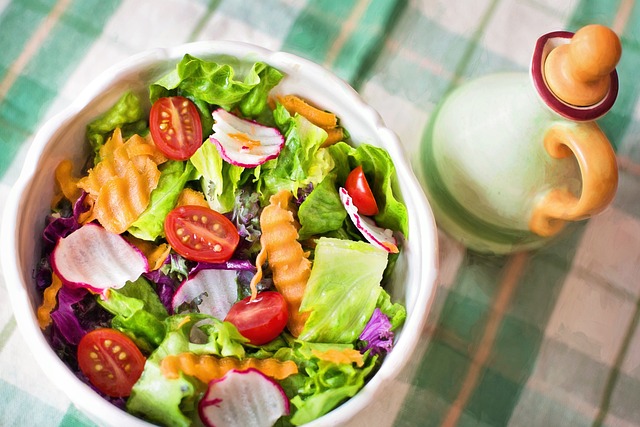The packaged salad industry has boomed in recent years, offering consumers a convenient and healthy meal option. However, with this growth has come increased scrutiny over food safety, particularly concerning the presence of Listeria monocytogenes. This bacterium poses significant health risks and has been notoriously difficult to eradicate from food production environments due to its ability to form biofilms. Understanding the role of biofilms in Listeria persistence is crucial for addressing the challenges faced by the packaged salad industry.
Biofilms: The Silent Menace
Biofilms are complex communities of microorganisms that adhere to surfaces and produce a protective matrix of extracellular polymeric substances (EPS). This matrix shields the bacteria from environmental stresses, disinfectants, and the host’s immune system. In the case of Listeria monocytogenes, biofilms can form on various surfaces within food processing facilities, including stainless steel, plastic, and glass.
The formation of biofilms begins with the initial attachment of free-floating bacterial cells to a surface. These cells then multiply and produce EPS, which anchors them more firmly. As the biofilm matures, it becomes more resistant to cleaning and sanitizing agents, making it challenging to eliminate Listeria from the production environment.
Challenges for the Packaged Salad Industry
Surface Contamination: Packaged salads often involve multiple steps, including washing, cutting, and packaging. These processes provide numerous opportunities for Listeria to form biofilms on equipment surfaces. Once established, biofilms can persist through routine cleaning procedures, leading to repeated contamination of products.
Sanitation Limitations: Standard sanitation practices may be insufficient to penetrate and eradicate Listeria biofilms. Disinfectants that are effective against planktonic (free-floating) Listeria cells may not work against biofilms. This limitation necessitates the development of more robust cleaning protocols specifically targeting biofilm disruption.
Environmental Resilience: Listeria biofilms exhibit remarkable resilience in various environmental conditions, including low temperatures and high humidity. This adaptability allows Listeria to survive and thrive in cold storage environments where packaged salads are typically kept, increasing the risk of contamination.
Cross-Contamination: Biofilms can act as reservoirs for Listeria, leading to cross-contamination of packaged salads. For instance, a biofilm on a conveyor belt or cutting board can transfer bacteria to fresh produce, perpetuating the cycle of contamination.
Strategies to Combat Listeria Biofilms
To address the challenges posed by Listeria biofilms, the packaged salad industry must adopt comprehensive strategies that go beyond conventional sanitation practices. Some effective approaches include:
- Advanced Sanitation Technologies: The use of advanced sanitation technologies, such as enzymatic cleaners and biofilm-disrupting agents, can enhance the efficacy of cleaning procedures. These agents target the EPS matrix, breaking down biofilms and exposing the bacteria to disinfectants.
- Routine Monitoring and Testing: Regular monitoring and testing of equipment and surfaces for Listeria contamination are essential. Implementing environmental monitoring programs can help identify biofilm hotspots and guide targeted sanitation efforts.
- Surface Engineering: Modifying surface materials and designs to reduce microbial attachment and biofilm formation can be an effective preventive measure. For example, using materials with antimicrobial properties or smooth, non-porous surfaces can minimize biofilm development.
- Employee Training: Training employees on the importance of biofilm control and proper sanitation techniques is crucial. Ensuring that staff members understand the risks associated with biofilms and the correct procedures for cleaning and disinfection can significantly reduce contamination incidents.
- Collaboration and Research: Collaboration between industry stakeholders, researchers, and regulatory agencies is vital for developing and implementing effective biofilm control strategies. Ongoing research into novel sanitation methods, biofilm detection technologies, and Listeria behavior can provide valuable insights for improving food safety practices.
Case Studies: Industry Response to Biofilm Challenges
Several case studies highlight the proactive measures taken by the packaged salad industry to combat Listeria biofilms:
- Case Study 1: Enzymatic Cleaners for Biofilm Removal A packaged salad company implemented enzymatic cleaners in their sanitation protocol to target biofilms. This approach led to a significant reduction in Listeria contamination rates and improved overall food safety.
- Case Study 2: Surface Modification in Processing Facilities Another company invested in surface modifications, replacing porous materials with non-porous, antimicrobial surfaces. This intervention minimized biofilm formation and reduced the risk of cross-contamination.
Conclusion
The persistence of Listeria due to biofilm formation presents substantial challenges for the packaged salad industry. However, by understanding the mechanisms of biofilm development and adopting advanced sanitation technologies, routine monitoring, surface engineering, employee training, and collaborative research, the industry can effectively address these challenges. Ensuring the safety of packaged salads requires a multifaceted approach that prioritizes biofilm control, ultimately protecting consumer health and maintaining trust in these popular products.
 :
https://www.pinterest.com/
:
https://www.pinterest.com/












